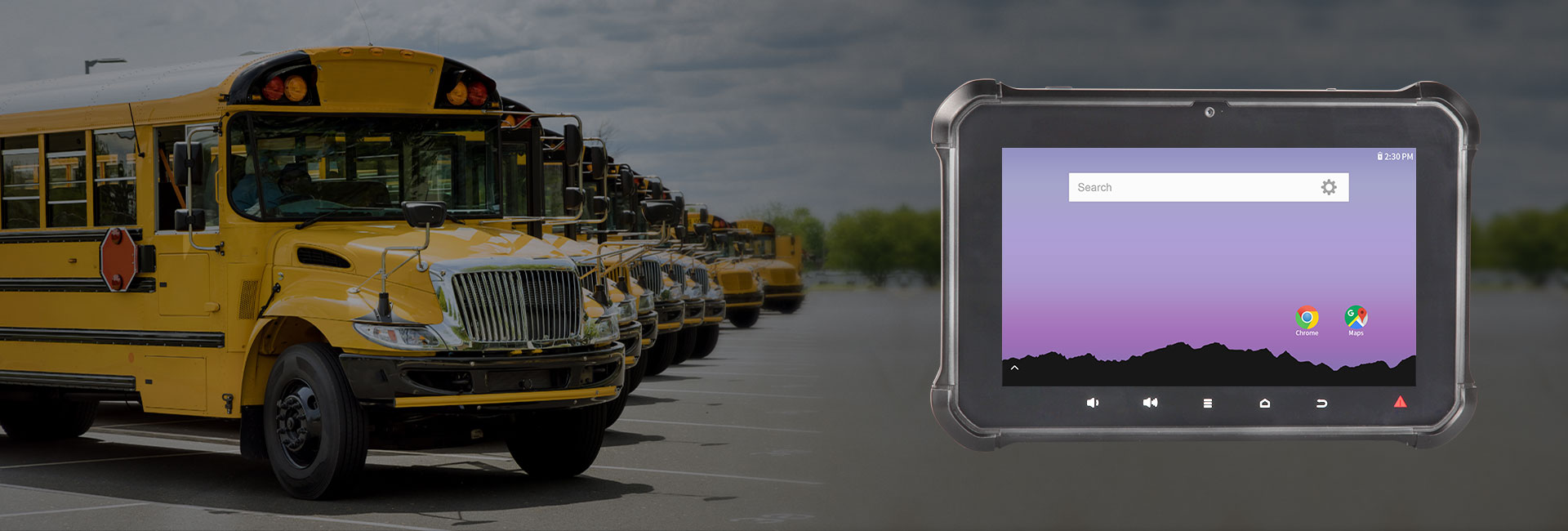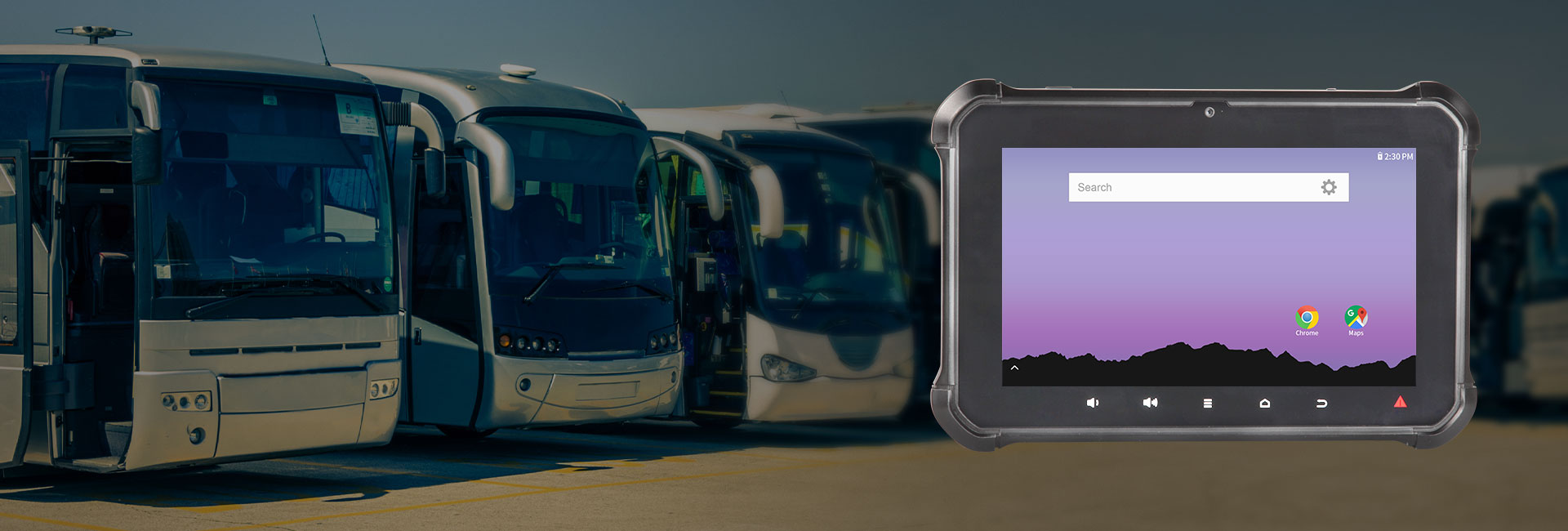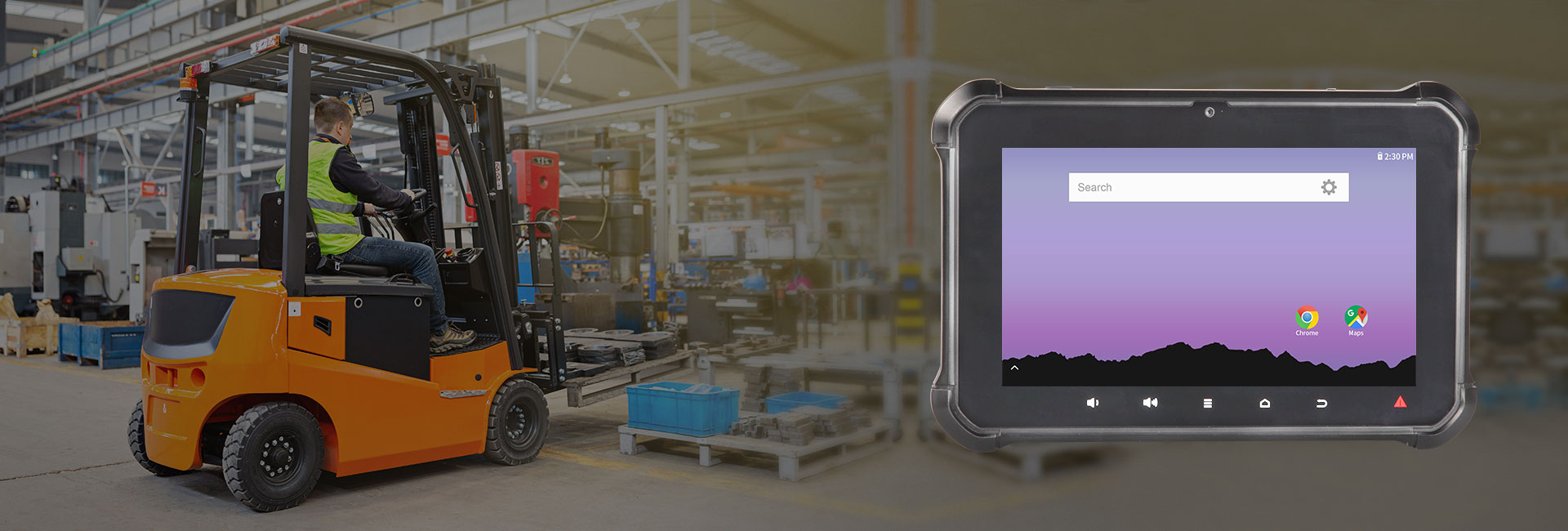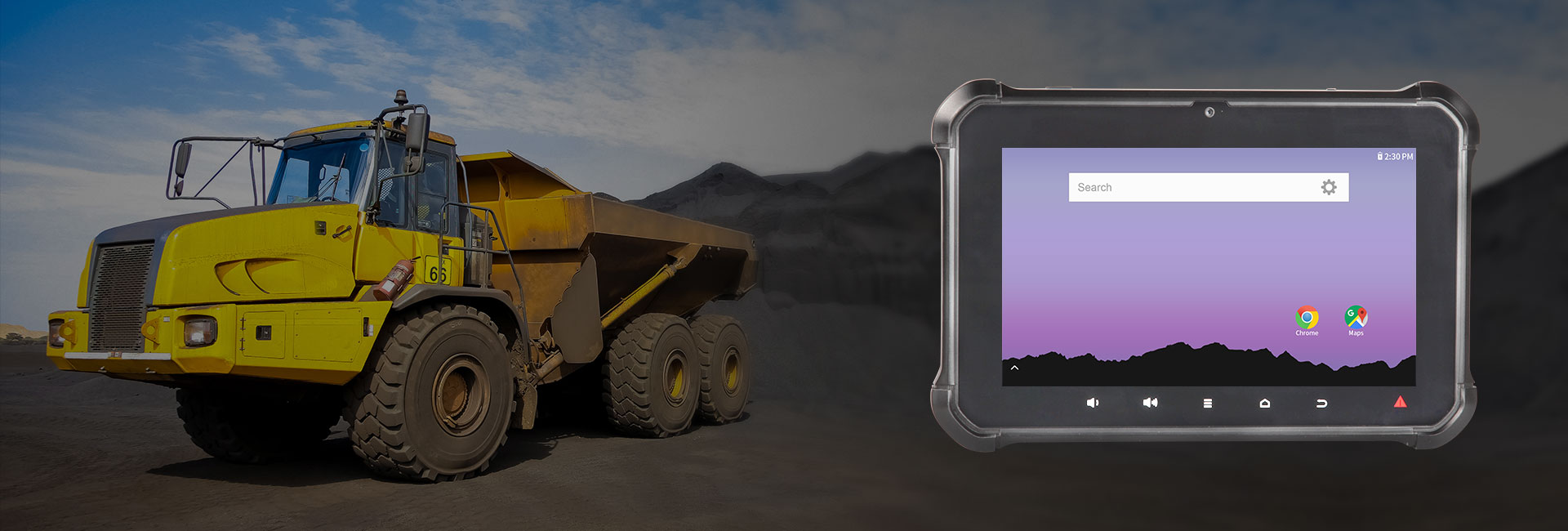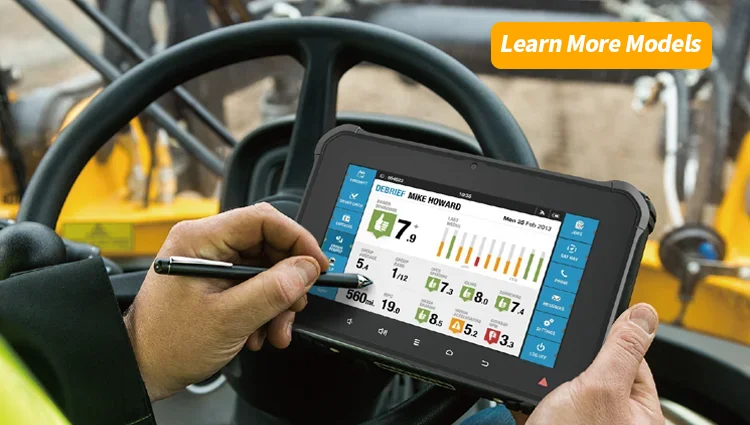Home > Blog > Exploring the 8-Inch Vehicle Mount Rugged Computer: A Durable Tech Solution for Tough Jobs
Exploring the 8-Inch Vehicle Mount Rugged Computer: A Durable Tech Solution for Tough Jobs
Time: 2025-04-10 Editor: Hitekon Rugged Tablet Manufacturer
- Why Rugged Tech Matters
- What Is an 8-Inch Vehicle Mount Rugged Computer?
- Why Choose an 8-Inch Model Over Other Sizes?
- Built for the Grind: Key Features
- Real-World Applications Across Industries
- Benefits That Make a Difference
- Choosing the Right 8-Inch Rugged Computer
- Installation and Setup Tips
- The Future of Rugged Vehicle Tech
- Conclusion: Tough Tech for Tough Work
- FAQs
Why Rugged Tech Matters
Picture this: you’re a delivery driver navigating icy roads in northern Canada, or maybe a construction supervisor overseeing a dusty site in rural England. Your tools need to keep up—especially your tech. Enter the 8-inch vehicle mount rugged computer, a compact yet tough piece of equipment built to handle the roughest conditions while keeping you connected and productive. Across Europe and North America, industries like logistics, construction, and emergency services rely on these devices daily. But what makes them so special? In this deep dive, I’ll walk you through everything you need to know about these sturdy machines—from their design to their real-world uses—based on years of observing tech trends and talking to folks who use them on the job.
This isn’t just another gadget review. It’s a guide crafted for people like you—whether you’re a fleet manager in Texas or a field technician in Germany—looking for reliable tech that won’t quit when the going gets tough. Let’s explore why the 8-inch rugged computer might just be your next must-have tool.
What Is an 8-Inch Vehicle Mount Rugged Computer?
At its core, an 8-inch vehicle mount rugged computer is a touchscreen device designed to be fixed inside vehicles—think forklifts, ambulances, or delivery vans—and withstand extreme conditions. Unlike your average tablet, these machines are engineered with durability in mind. They’ve got reinforced casings, sealed ports to keep out dust and water, and screens that stay readable even in blazing sunlight or freezing rain.
The “8-inch” part refers to the screen size—big enough to display maps, work orders, or diagnostics clearly, but small enough to fit snugly on a dashboard without eating up space. Most models run on Windows or Android, offering flexibility for different software needs. I’ve seen these in action at a warehouse in Ohio, where workers used them to track inventory on forklifts, and they didn’t miss a beat despite the constant jolting and grime.
They’re not just tough on the outside, either. Inside, they pack processors capable of running heavy-duty apps, plus connectivity options like Wi-Fi, Bluetooth, and sometimes 4G or 5G. It’s tech that’s ready for the real world, not just the showroom.
Why Choose an 8-Inch Model Over Other Sizes?
You might wonder: why 8 inches? Why not a bigger 10-inch screen or a smaller 7-inch one? It’s all about balance. An 8-inch rugged computer hits a sweet spot for vehicle use. Larger screens can clutter a cab or cockpit, especially in tight spaces like a tractor or an ambulance. Smaller ones, while portable, often feel cramped when you’re trying to read detailed maps or input data with gloved hands.
I spoke to a logistics coordinator in Manchester who switched from a 10-inch model to an 8-inch one. “The bigger screen was overkill,” she told me. “It blocked part of the driver’s view, and we didn’t need all that real estate for our tracking software.” The 8-inch version gave her team clarity without the hassle. It’s practical, not flashy—and in rugged tech, practical wins every time.
Built for the Grind: Key Features
These computers aren’t your average office gear. They’re built to take a beating and keep going. Here’s what sets them apart:
- Durability Standards: Most meet military-grade specs like MIL-STD-810G, meaning they can handle drops, vibrations, and extreme temperatures—say, -20°F in a Minnesota winter or 120°F in a Nevada summer. They’re also often IP65 or IP67 rated, so dust and water don’t stand a chance.
- Mounting Options: They come with brackets or docks to secure them in vehicles. I’ve seen setups where they’re bolted to a forklift arm or clipped to a truck dash—rock-solid even on bumpy terrain.
- Touchscreen Tech: Gloved hands? Wet fingers? No problem. The capacitive screens are designed for tough conditions, and some even work with styluses for precision.
- Battery and Power: Many run off the vehicle’s power supply, with backup batteries to keep them humming if the engine cuts out. A paramedic in Dublin told me this saved the day when his ambulance stalled mid-call, and the computer stayed online to relay patient data.
- Connectivity: From GPS for navigation to cellular for real-time updates, these devices keep you linked up, no matter how remote the job site.
These features aren’t just specs on a sheet—they’re lifelines for workers who can’t afford downtime.
Real-World Applications Across Industries
So, who’s using these rugged computers? Pretty much anyone whose office has wheels and faces the elements. Let’s break it down:
- Logistics and Delivery: In the U.S. and UK, companies like FedEx or DHL use them to track packages, optimize routes, and update customers—all while drivers bounce along highways or rural lanes.
- Construction and Mining: On sites from Alberta to Scotland, supervisors mount these in heavy machinery to monitor progress, log data, or pull up blueprints without leaving the cab.
- Emergency Services: Ambulances and fire trucks rely on them for navigation and patient info. A firefighter in Oregon once showed me how his unit’s 8-inch screen guided them through smoke-choked backroads during a wildfire.
- Agriculture: Farmers in Iowa or the Netherlands use them in tractors to manage crops, track soil conditions, or sync with smart farming tools.
Each industry leans on the same core strengths: toughness, reliability, and the ability to perform under pressure. It’s not about luxury—it’s about getting the job done.
Benefits That Make a Difference
Why invest in one of these over a cheaper consumer tablet? The payoff is clear if you’re in the field:
- Longevity: Drop a regular tablet off a forklift, and it’s toast. These rugged models shrug it off and keep running, saving you replacement costs.
- Productivity: Real-time data access—like delivery updates or machine diagnostics—keeps workflows smooth. A warehouse manager in Berlin told me his team cut downtime by 20% after switching to rugged mounts.
- Safety: Clear, reliable screens mean fewer mistakes. For a trucker hauling freight across the Rockies, that could be the difference between a safe turn and a missed hazard.
- Cost Efficiency: Sure, they’re pricier upfront—often $1,000 to $2,000—but they outlast consumer gear by years, especially in harsh settings.
It’s not about bells and whistles; it’s about tech that works as hard as you do.
Choosing the Right 8-Inch Rugged Computer
Picking one isn’t a one-size-fits-all deal. Here’s what to consider, based on what I’ve learned from users and vendors:
- Operating System: Windows suits complex software; Android’s lighter and more app-friendly. A fleet owner in Florida swore by Windows for its compatibility with his legacy systems.
- Processor and RAM: For basic tasks like navigation, 4GB RAM and a mid-tier chip do fine. Heavy apps—like 3D mapping—need more muscle, maybe 8GB and an Intel Core processor.
- Mounting Needs: Check if the dock fits your vehicle. A farmer I met in Yorkshire had to swap models because the first one didn’t clamp right on his tractor.
- Environment: Freezing winters? Scorching summers? Match the temp range to your region. IP ratings matter too—IP67 beats IP65 if you’re in constant rain or dust.
- Budget: Prices vary wildly. Entry-level units start around $800, while top-tier ones with 5G and extra ruggedness hit $2,500. Weigh durability against cost.
Test a demo if you can. Hands-on time beats spec sheets any day.
Installation and Setup Tips
Getting it up and running isn’t rocket science, but it’s not plug-and-play either. Here’s how to do it right:
- Mount Securely: Use the provided bracket and double-check it’s tight. A loose mount in a bouncing truck is a recipe for trouble.
- Power Up: Wire it to the vehicle’s battery or use a DC adapter. Pros recommend a fuse to avoid shorts—I’ve seen a sloppy setup fry a unit in Michigan.
- Software Load: Install your apps—navigation, fleet management, whatever—before hitting the road. Test them in the yard first.
- Train the Team: Show your crew how to use it. A delivery guy in Leeds told me half his team ignored the computer until they got a quick demo.
It’s worth the effort. A solid setup means fewer headaches later.
The Future of Rugged Vehicle Tech
These devices aren’t standing still. I’ve been tracking trends, and here’s what’s coming:
- 5G Integration: Faster data speeds are rolling out, perfect for live video feeds or cloud syncing in remote areas.
- AI Smarts: Some models now offer predictive maintenance alerts—handy for construction rigs or ambulances that can’t afford breakdowns.
- Greener Design: Manufacturers are eyeing solar trickle chargers and lower-power chips to cut energy use, a big deal for eco-conscious fleets in Europe.
The 8-inch rugged computer isn’t just keeping up—it’s evolving with the jobs it serves.
Conclusion: Tough Tech for Tough Work
The 8-inch vehicle mount rugged computer isn’t a luxury item—it’s a workhorse. Whether you’re hauling freight across Texas, plowing fields in France, or rushing to emergencies in Ontario, it’s built to handle the chaos and keep you on track. Its blend of durability, practicality, and tech smarts makes it a standout choice for anyone whose office moves on wheels.
If you’re in the market, weigh your needs, test your options, and invest in something that’ll last. It’s not just a tool—it’s a partner for the grind. What’s your next step? Maybe it’s time to see one in action.
FAQs
1. What makes an 8-inch vehicle mount rugged computer different from a regular tablet?
Unlike regular tablets, these are built with military-grade durability—resistant to drops, dust, water, and extreme temperatures—plus vehicle-specific mounting and power options.
2. Who uses 8-inch vehicle mount rugged computers?
They’re popular with logistics drivers, construction crews, emergency responders, and farmers—anyone needing reliable tech in tough, mobile settings.
3. How durable are these rugged computers?
Most meet MIL-STD-810G standards for shock and vibration and have IP65 or IP67 ratings, meaning they’re dustproof and can handle water exposure.
4. Can I use an 8-inch rugged computer in extreme weather?
Yes, they’re designed for it—operating in freezing colds down to -20°F or scorching heat up to 120°F, depending on the model.
5. What should I look for when buying one?
Focus on OS compatibility, processor power, mounting fit, environmental ratings, and budget. Test it for your specific job if possible.
Previous: 7 Reasons Why Rugged Tablets Are Revolutionizing Fleet Management in 2025
Next: Why a 10-Inch Rugged Linux Industrial Tablet PC Is a Game-Changer for Field Operations in 2025
Copyright © 2025.Hitekon All rights reserved.

